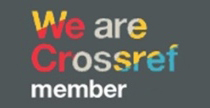Kajian Garap Kendang Pada Gending Kagok Respati
DOI:
https://doi.org/10.51804/deskovi.v5i2.1845Keywords:
Kendangan, Gending, Kagok Respati, Garap, Pelog.Abstract
This research is entitled "Study of Garap Kendang on Gending Kagok Respati". The research aimsto explain and analyze in depth one musical case of garap kendangan. The garap kendangan is focused on the gending of Kagok Respati. The problems revealed are related to the way of serving gending and the application of kendang instrument play to the Kagok Respati gending. Both problems were studied using the concept of garap. To obtain results that were as expected, this study used qualitative research methods with a discriptive analysis approach. A discriptive approach to analysis is used to explain the shape and structure of the kagok respati gending kendangan pattern. Based on the results of the analysis, it was concluded that the road of serving gending Kagok Respati starts from buka, merong, umpak inggah, inggah, and suwuk. The pattern of the kendangan gending Kagok Repati part of the merong uses a kendangan setunggal merong kethuk 2 (loro) laras pelog. In the inggah section, it uses a Surakarta-style ciblon kendangan.
Downloads
References
Aji, A. S. (2019). Konsep Mandheg dalam Karawitan Gaya Surakarta (Vol. 20, Issue 2). Institut Seni Indonesia Surakarta.
Hardjoprasonto, S. (1997). Bunga Rampai Seni Tari Solo. In Jakarta: Taman Mini Indonesia Indah.
Krismiatin, W. B. D., & Suyoto, S. (2021). Garap Kendang Gaya Surakarta Dan Yogyakarta Dalam Rangkaian Mrabot (Studi Kasus: Gending Maduwaras). Keteg: Jurnal Pengetahuan, Pemikiran Dan Kajian Tentang Bunyi, 20(2), 131–146. https://doi.org/10.33153/keteg.v20i2.3551
Martopangrawit. (1972). Titilaras Kendangan. Konservatori Karawitan Indonesia.
Martopangrawit, L. R. (1975). Pengetahuan Karawitan. ASKI.
Ochtaviani, D. E., & Widodo, W. (2021). The Revitalization Of Badrasanti’s Literary Work In The Form Of Musical Performances. Jurnal Seni Musik, 10(2), 165–175. https://doi.org/10.15294/jsm.v10i2.53120
Pryatna, I. P. D., Sugiartha, I. G. A., & Arsiniwati, N. M. (2020). Metode Mengajar Kendang Tunggal I Ketut Widianta. Jurnal Kajian Seni, 6(1), 25. https://doi.org/10.22146/jksks.51868
Purwadarminta, W. J. S. (1939). Baoesastra Djawa, B. Batavia: Mattschappij Groningen.
Raharja, B. (2019). Pembelajaran Karawitan Jawa Tingkat Dasar Berbasis Multimedia dalam Belended Learning. Resital: Jurnal Seni Pertunjukan, 20(3), 176–188. https://journal.isi.ac.id/index.php/resital/article/view/3842%0Ahttps://journal.isi.ac.id/index.php/resital/article/viewFile/3842/1782
Rusdiyantoro. (2019). Kebertahanan Notasi Kepatihan Sebagai Sistem Notasi Karawitan Jawa. Keteg: Jurnal Pengetahuan, Pemikiran Dan Kajian Tentang Bunyi, 18(2), 136–147. https://doi.org/10.33153/keteg.v18i2.2402
Setiawan, S. (2019). Unsur Kompetisi Musikal Dalam Sajian Gending Gamelan Sekaten. Keteg: Jurnal Pengetahuan, Pemikiran Dan Kajian Tentang Bunyi, 18(1), 14–24. https://doi.org/10.33153/keteg.v18i1.2393
Supanggah, R. (2009). Bothekan Karawitan II: Garap. ISI Press Surakarta.
Suraji. (2001). Garap Kendhang Inggah Kethuk 8 Gendhing-gendhing Klenengan Gaya Surakarta Sajian Irama Wiled. Sekolah Tinggi Seni Indonesia.
Suyoto. (2016). Carem: Puncak Kualitas Bawa Dalam Karawitan Gaya Surakarta. UGM.
Trustho. (2005). Kendhang Dalam Tradisi Tari Jawa. STSI Press.
Wasitodiningrat, K. R. T., Isworo, L. (Dexter) D., Dea, A., & Kotmeyer,
L. (1995). The Vocal Notation of K.R.T Wasitodiningrat (J. Diamond (ed.)). American Gamelan Institute.
Downloads
Published
How to Cite
Issue
Section
License
With the receipt of the article by DADJ Editorial Board and the decision to be published, the copyright regarding the article will be transferred to DADJ. The copyright transfer form can be downloaded here.
DADJ has the right to multiply and distribute the article and every author is not allowed to publish the same article that was published in this journal.

DESKOVI: Art and Design Journal is licensed under a Creative Commons Attribution 4.0 International License.
Under the following terms:
Attribution — You must give appropriate credit, provide a link to the license, and indicate if changes were made. You may do so in any reasonable manner, but not in any way that suggests the licensor endorses you or your use.





